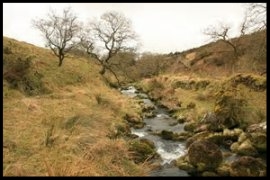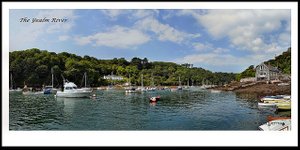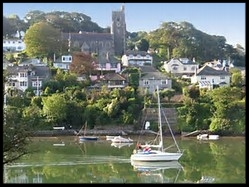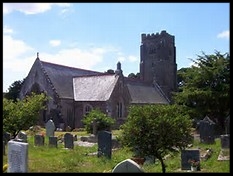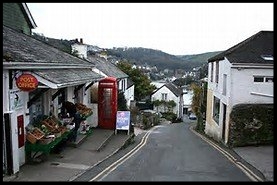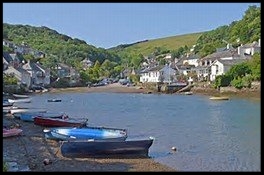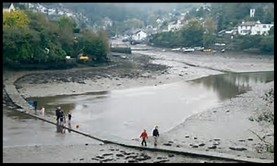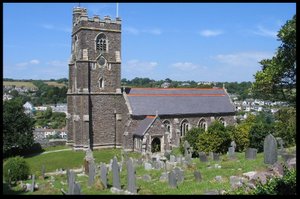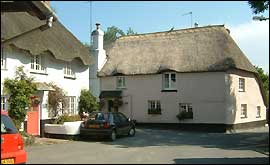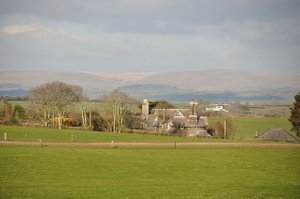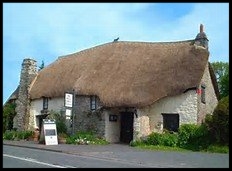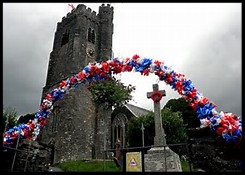The River Yealm and it's Villages
The River Yealm is a tranquil, unspoilt and increasingly popular harbour and also an important area in terms of conservation. It is a ‘Bass Hatchery’, & oysters and mussels also thrive here. It is a ‘Special Area of Conservation’, and a ’Site of Special Scientific Interest’, and as such harbours many protected species. Much of the surrounding land is owned by the National Trust.
Its waters are managed by the River Yealm Harbour Authority – a statutory non-profit making body which leases the harbour (except for the Kitley Estate area further upstream) from the Crown Estate. The Authority’s function is to regulate the harbour for the benefit of all its users.
The two villages of Newton Ferrers and Noss Mayo house much of the local community and keep careful watch on each other from opposite sides of Newton Creek. Each has pub(s) and a church though only Newton Ferrers has shops, post office and a thriving Yacht Club.
The River Yealm rises 430 metres above sea level on the Stall Moor mires of south Dartmoor and makes its 15 mile journey to the sea passing through the villages of Cornwood, Lee Mill and Yealmpton, before reaching the estuary mouth just below Newton Ferrers and Noss Mayo.
Newton Ferrers
Newton Ferrers is in the parish of Newton & Noss, and its church, The Holy Cross. dates back to the 12th to 14th Centuries, but there are records of a church on the grounds as long ago as 1084.
Perhaps unusually, the centre of the village is set some distance from the main harbour. Due to it's shape, the harbour is locally known as "The Pool". During the summer months, and fine weather, the harbour comes alive with activity as local and visiting boats come and go. It's a popular hang out for tourists who enjoy sitting in the waterside sun, watching the boating activities.
A local water taxi, operated by Billy, is available most of the time during the summer to ferry people about, and take tourists on boat trips. The new harbour complex houses the harbour office where Harbour Master Robin keeps a watchful eye on events, and also provides toilet and shower facilities for visiting boats.
Newton Ferrers was recorded in the 1086 Domesday Book as Niwetone The village was "given" to a Norman noble family "Ferrers" and the village became Newton Ferrers. It is the likely birthplace of the notorious 17th-century pirate Henry Every. The village is separated from it's neighbouring village, Noss Mayo, by a tidal creek, which can be crossed on foot at low tide via the Voss.
Noss Mayo
The tiny, pretty little village of Noss Mayo is hidden away on the southern bank of the Yealm estuary. This ancient and secluded village is an ideal location if you’re looking to get away from the hustle and bustle of daily life and simply ‘mess about on the river’.
The Voss
Despite being a village of just over 500 people, Noss Mayo has a colourful history. Although the nearby estate of Membland was mentioned in the Domesday Book, the first record of the parish is in 1198. In 1287 King Edward I gave Mathew Fitzjohn the manor of ‘Stok’ and so the village became known as Noss Mayo, which translates as ‘Mathew’s Nose’.
St. Peter's Church at Noss Mayo was built in 1877 by Edward Baring, the 1st Lord Revelstoke, and took over from the nearby now derelict Church of St Peter the Poor Fisherman, Revelstoke, which was built in 1226
The village survived the Black Death and, because of its prime location on the Yealm estuary, became a smuggler’s haunt.
The history of Newton & Noss is interesting dating back to 847 AD. A story of pirates, civil war, family feuds, the Black Plague and cholera.
Edward Baring, the 1st Lord Revelstoke, bought Membland estate, - instantly recognizable by its 'distinctively spiky romantic style of continental derivation'. The Baring bank crash brought financial disaster in 1895
Flete House is situated in a large park and was formerly the seat of Baron Mildmay of Flete. The house was remodelled in the Gothic style in 1835, and the front is all of this date, but the architect Norman Shaw extensively remodelled the building from 1878 onwards. During World War II it was used as a maternity home, and Dave Hill of pop group Slade was born there in 1946. As of 2004 it was being used as apartments for the elderly.
The estate of Mothecombe was a seat of a junior branch of the Pollexfen family of Kitley, Yealmpton. The mansion house was built by John Pollexfen circa 1710-20. In 1872 it was acquired by Henry Bingham Mildmay (of Barings Bank) who 4 years later in 1876 also acquired Flete, in the same parish of Holbeton, the ancestral home of his wife Georgiana Bulteel, which had been sold in 1863 by her brother to an Australian sheep farmer.
Adeston was held by the de Adeston family. The last in the male line was Gilbert de Adeston, who died during the reign of King Edward III (1327-1377) and left a daughter and sole heiress Jone de Adeston, who married John Prideaux, a younger son of Sir Roger Prideaux of Orcherton. Adeston remained in the Prideaux family of Theuborough in the parish of Sutcombe, Devon, until sold by "Richard Prideaux of Theuborough" (probably Richard Prideaux (d.1617) or his father Richard Prideaux (d.1603))
Holbeton:
The southern boundary of the parish lies on the coast (at Bigbury Bay), and it is surrounded clockwise from the west by the parishes of Newton and Noss, Yealmpton, Ermington, & Modbury.
To the east of the village is an Iron Age enclosure or hill fort known as Holbury. Historically the parish formed part of Ermington Hundred and it contains several historic estates.
Membland is an historic estate in the parish of Newton and Noss, Devon, situated about 8 miles south-east of the centre of Plymouth.
The estate was purchased in about 1877 by Edward Baring, 1st Baron Revelstoke (1828–1897), senior partner of Barings Bank, who rebuilt the mansion house known as Membland Hall.
He suffered financial troubles and in 1899 the estate and Hall were sold to a property developer. A year later Membland was sold to ship builder William Cresswell Gray.
The house became derelict after World War I and was demolished in 1927. Several of the estate's service buildings survive, including the Bull and Bear gatekeeper's lodge, stables, gasworks, forge and laundry. On the site of the house a smaller dwelling was built between 1966 and 1968.
Anciently called Mimiland, it was successively the seat of the families of de Mimiland, Hillersdon, Champernowne, Stert, Bulteel, Perring and Baring.
Yealmpton
Yealmpton village is located in the on the Plymouth to Kingsbridge road and is about 8 miles from Plymouth. Its name derives from the River Yealm that flows through the village. Yealmpton is home to a 400-year-old stone cottage, where it is said, a version of the famous rhyme Old Mother Hubbard was written. It is also the site of Kitley Caves where green marble was once quarried.
Brixton
Mother Hubbards
The parish of Brixton has a long history which can be traced back to the Doomsday Book. The local economy was traditionally based on farming, together with other rural and commercial activities around the river Yealm. The village of Brixton visibly reflects its history with its 14th Century Church and Priests’ Cottages, alongside the historic Feoffee Trust owned cottages and park.







